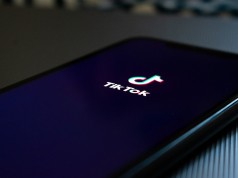Future of Retail in The Digital World
Retail in the digitized world has morphed into e-commerce which is booming in leaps and bounds. This is why, in this article, we are going to discuss the future of retail in the digital world. Let’s get started!
Shrinking Delivery Periods
If there is anything that Amazon Prime has taught us, it is the fact that shoppers are no longer willing to wait more than two days to receive their products. However, Amazon’s recent shift to free one-day shipping demonstrates that consumers are getting even less patient day by day. In a recent study, it has been found out that 88% of consumers are willing to pay for same-day or faster shipping. Also, because of this same trend, we can see the rise of apps such as Instacart and Shipt. People are drawn not just to the convenience of grocery delivery, but also to the ability to get whatever it is that they need in the window of two hours or less.
Making Retail Easier and More Personal In Digital
Modern consumers don’t just want their products fast. They also want to be able to get information about them quickly. They want to go to an e-commerce website and be able to compare prices, styles, delivery dates, and so on. This is where AI comes in. It helps make the experience of online retail completely personalized. Consumers are always dropping hints about the types of things they like and want in terms of user journeys and search queries. Now, it is up to the AI to identify these patterns and the needs of the consumers to let retailers know. In the digital world, retail companies need to make a large investment in analytics and AI tools to know customers better and deliver better offers.
Social Shopping
In the digital transformation, consumers so far seem to be ‘all in’ for receiving a seamless experience. That is why technologies such as visual search and social shopping are going to skyrocket. Again, when it comes to these technologies, it is AI that is taking the lead and making it possible. Now, from a platform standpoint, it is majorly Instagram and Pinterest that have helped pioneer social shopping. However, the scope for integrating these technologies into standalone e-commerce websites and even brick and mortar retail outlets is increasing day by day.
For instance, Stitch Fix can very easily expand social platform usage as a way to better tailor. The wardrobes it sends to customers uses machine learning. No matter what, the future of social and retail integration will happen when 360 data is utilized to make the experiences of consumers better.
This brings us to the end of our discussion on the future of retail in the digital world. Now, do let us know some of your own personal thoughts and opinions on the same.









